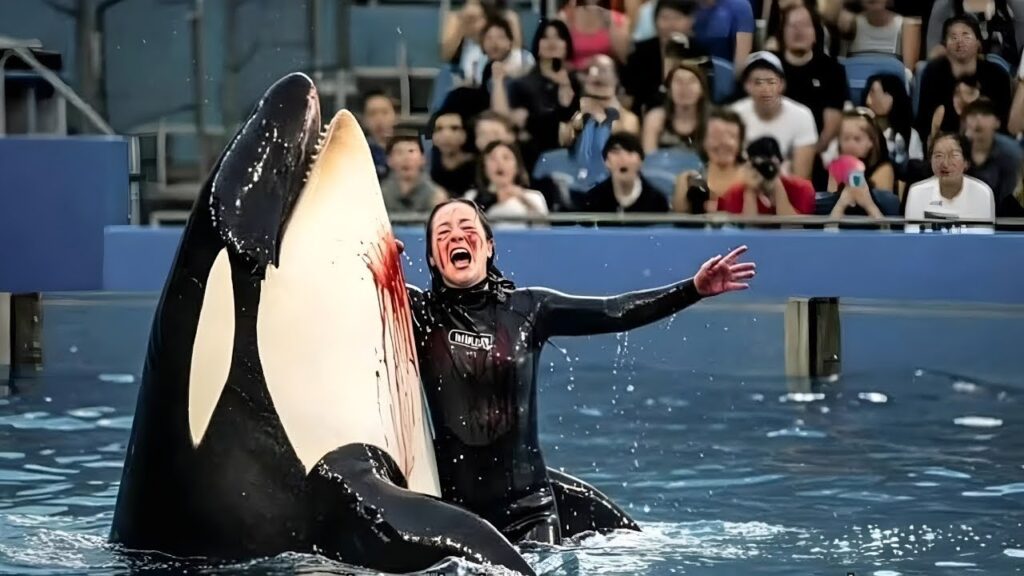Introduction (PAS Formula)
Problem:
Recently, social media has been flooded with a shocking video allegedly showing Jessica Radcliffe, a marine trainer, being attacked by an orca. The clip, shared across platforms, stirred fear, outrage, and intense debate among viewers who questioned the safety of working with killer whales. Many believed the footage was real, adding fuel to the ongoing controversy over marine animal captivity.
Agitate:
However, not everything that trends online is true. Viral videos often blend fact with fiction, leaving audiences confused and misinformed. In this case, the Jessica Radcliffe orca attack video sparked panic, online hate, and misinformation about her work. Without proper fact-checking, such content can damage reputations and spread unnecessary fear.
Solution:
This article dives deep into the truth behind the clip — examining whether it’s real or fake, exploring Jessica Radcliffe’s actual career, and discussing the bigger issues of viral misinformation and marine life awareness. By the end, you’ll know exactly what happened, why it matters, and how to spot similar fake videos in the future.
1. Who is Jessica Radcliffe?
Jessica Radcliffe is a professional marine trainer who has worked with various aquatic animals, including dolphins and killer whales. Her career focuses on animal care, training, and public education. While the viral video paints a dangerous scene, Jessica’s real-life work is far from the chaos depicted in the clip.
1.1 Early Career and Training
Jessica began her career studying marine biology, later joining a renowned aquatic center. She quickly became known for her patient, ethical training methods, prioritizing animal welfare over entertainment stunts.
1.2 Work with Orcas
Contrary to viral narratives, Jessica’s work with orcas involves controlled environments and strict safety protocols. She understands their behavior patterns, ensuring interactions remain positive and safe.
1.3 Advocacy for Marine Animals
Beyond training, Jessica advocates for responsible marine animal care, educating the public on conservation efforts and the dangers of misinformation.
2. The Viral Orca Attack Video Explained
The “Jessica Radcliffe orca attack” video shows a killer whale allegedly lunging at her during a training session. The clip quickly spread, with millions of views in just days.
2.1 How the Clip Went Viral
The video first appeared on TikTok, gaining traction through shares, stitches, and reaction videos. The dramatic nature of the footage made it perfect clickbait for social media algorithms.
2.2 Signs the Video Might Be Fake
-
Unclear video quality
-
Mismatched audio
-
Footage cuts before showing the full event
These clues hint that the clip could be edited or taken out of context.
2.3 Fact-Checking the Footage
Media experts and marine life organizations confirmed the clip was not real. It was actually edited from a documentary and unrelated footage, digitally altering Jessica’s image into the scene.
3. Why Fake Videos Spread So Quickly
In the digital age, misinformation spreads faster than truth — and the Jessica Radcliffe case is proof.
3.1 Social Media Algorithms
Platforms reward content that gets quick reactions. Sensational clips like this often receive high engagement, regardless of accuracy.
3.2 Emotional Triggers
Fear and shock drive clicks. The idea of a trainer being attacked by an orca plays directly into primal emotions.
3.3 Lack of Fact-Checking
Most viewers share before verifying. This is why fake news, edited clips, and hoaxes thrive online.
4. The Real Dangers of Misinformation in Wildlife Content
Fake videos can harm not just people, but also animals and conservation efforts.
4.1 Damage to Reputations
Trainers like Jessica Radcliffe can face public backlash, career setbacks, and even threats based on false claims.
4.2 Negative Impact on Conservation
Misleading content can create unnecessary fear, making the public less supportive of conservation programs.
4.3 How to Verify Wildlife Videos
-
Check credible news outlets
-
Look for official statements
-
Reverse search the video source
5. What We Can Learn from the Jessica Radcliffe Orca Video
The incident offers valuable lessons for both viewers and content creators.
5.1 Be a Critical Viewer
Never accept viral content at face value. Pause before reacting or sharing.
5.2 Support Responsible Media
Follow creators and outlets that prioritize accuracy over clicks.
5.3 Spread Awareness
Educate others on spotting fake wildlife content, helping reduce the impact of viral hoaxes.
Conclusion
The Jessica Radcliffe orca attack video might have looked real, but it was nothing more than an edited hoax. While it grabbed attention, it also showed how quickly misinformation can damage reputations and mislead the public. By staying informed, fact-checking before sharing, and supporting credible sources, we can help slow the spread of such false narratives.
If you care about marine life, animal trainers, and honest reporting, start by questioning what you see online — because not every viral video tells the truth. Stay curious, stay critical, and protect both people and wildlife from digital deception.



